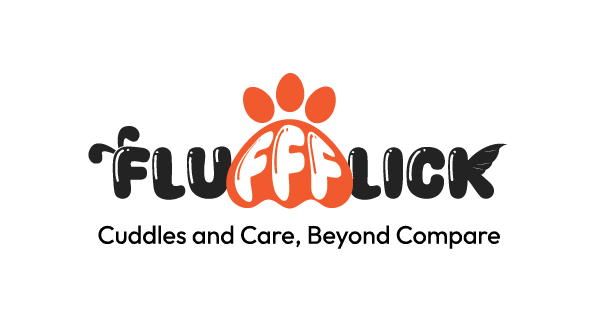Dogs are incredible communicators, but unlike humans, they don’t use words to express themselves. Instead, they rely on a complex system of body language and behavior to communicate with their owners and the world around them. As a dog owner, learning to interpret these cues can deepen your relationship with your pet and help you understand what your dog is trying to tell you. This blog will break down dog body language explained, common dog behavior signs, and tips for dog behavior training.
1. Why Understanding Dog Body Language is Important
Dogs use their bodies to convey a wide range of emotions, from happiness and excitement to fear and aggression. Being able to interpret these signals can:
- Enhance Communication: Understanding your dog’s body language helps you respond to their needs and emotions more effectively.
- Prevent Behavior Problems: Recognizing signs of stress or discomfort early can help you intervene before a behavior issue develops.
- Strengthen Your Bond: By interpreting dog communication cues, you can develop a deeper bond with your dog and meet their emotional and physical needs better.
2. Dog Body Language Explained: Key Signs to Watch For
Here are some of the most common forms of dog body language explained, so you can better understand how your dog is feeling and what they are trying to communicate.
Tail Position and Movement
- Wagging Tail: A wagging tail doesn’t always mean a dog is happy. A loose, wide wag often indicates excitement or contentment, while a stiff, high wag may signal aggression or dominance.
- Tucked Tail: A tail tucked between the legs is a sign of fear, submission, or stress. This is your dog telling you they feel threatened or insecure.
- Neutral Tail: When a dog’s tail is in a neutral position (level with their back), they are usually calm and relaxed.
Ears
- Perked Ears: If your dog’s ears are standing upright or are pointed forward, they are alert and paying attention to their surroundings.
- Flattened Ears: Ears pressed back against the head often indicate fear, submission, or anxiety.
- Relaxed Ears: Ears in a neutral or relaxed position show that your dog is comfortable and at ease.
Eyes
- Soft Eyes: When your dog’s eyes are relaxed and blinking slowly, they are calm and happy.
- Whale Eye: If you can see the whites of your dog’s eyes (commonly called “whale eye”), they may feel threatened, uncomfortable, or anxious.
- Hard Stare: A fixed, hard stare is a warning sign of aggression or dominance. If a dog is giving you this look, it’s best to give them space.
Mouth
- Relaxed Mouth: A slightly open mouth with a relaxed tongue is a sign of a content dog.
- Lip Licking or Yawning: These are subtle signs of stress or discomfort. Dogs often do this to calm themselves in uneasy situations.
- Baring Teeth: Showing teeth can be a warning of aggression, especially if accompanied by growling.
Posture
- Play Bow: When a dog lowers their front legs and raises their hindquarters, they are inviting play. This is one of the most common dog behavior signs of happiness and excitement.
- Rigid Body: A stiff, rigid posture can signal tension or aggression. If you notice this in your dog, it’s a sign that they are on edge.
- Cowering: A dog that is shrinking away or cowering is likely feeling scared or submissive.
3. Dog Behavior Signs and What They Mean
In addition to body language, certain behaviors can provide insight into what your dog is trying to tell you. Here are some common dog behavior signs and their meanings:
Barking
- Alert Barking: Dogs will bark to alert their owners to something they deem unusual or suspicious.
- Excited Barking: Short, repetitive barks often signal excitement, especially when paired with a wagging tail or playful behavior.
- Fearful Barking: A high-pitched, continuous bark could indicate fear or anxiety.
Growling
- Play Growling: Dogs sometimes growl while playing, which can be normal. Look at the rest of their body language to gauge if they are playful or serious.
- Aggressive Growling: A low, rumbling growl paired with rigid posture and bared teeth indicates a warning to back off.
Chewing
- Exploration: Puppies, in particular, use their mouths to explore their surroundings. Chewing can be a sign of curiosity.
- Boredom or Anxiety: Excessive chewing, especially on inappropriate objects, can signal that your dog is bored or anxious.
Digging
- Natural Instinct: Many dogs dig because it’s in their nature. They may dig to create a cool spot to lie down, bury food, or escape.
- Anxiety or Boredom: If your dog is digging excessively, it may be a sign of pent-up energy, anxiety, or boredom.
4. How Dog Behavior Training Helps
Interpreting your dog’s body language and behaviors is crucial for training. By recognizing the signals they are sending, you can adjust your training approach to suit their emotional state and avoid reinforcing unwanted behaviors.
Here are some tips for using dog behavior training to improve communication and behavior:
- Positive Reinforcement: Rewarding your dog for good behavior is one of the most effective training methods. Pay attention to their body language to know when they are calm and ready to learn.
- Address Unwanted Behaviors: If you notice signs of anxiety, fear, or aggression, don’t ignore them. Address the behavior with calm, consistent training and consider working with a professional if needed.
- Socialization: Proper socialization helps dogs become more confident and less fearful. Expose your dog to different environments, people, and other dogs while watching their body language for signs of comfort or stress.
- Patience and Consistency: Training takes time, and understanding dog communication is key to success. Be patient, consistent, and responsive to your dog’s cues.
5. What Your Dog is Trying to Tell You
Learning to interpret your dog’s body language is like understanding a new language. The more you observe your dog’s behaviors and body signals, the more you’ll be able to understand what your dog is trying to tell you. Here’s a quick guide to common emotions and their corresponding body language:
- Happy: Relaxed body, wagging tail, open mouth, and playful posture.
- Nervous: Yawning, lip licking, avoiding eye contact, and cowering posture.
- Alert: Perked ears, focused eyes, and a stiff, upright body posture.
- Fearful: Tail between legs, flattened ears, tense body, and avoidance behaviors.
- Aggressive: Bared teeth, growling, stiff body, and hard staring.
By paying attention to these signals, you can respond appropriately and create a trusting relationship with your dog.
Conclusion
Understanding your dog’s body language and behavior is key to effective communication and training. By learning to interpret dog behavior signs and body language, you’ll be able to respond to your dog’s emotional needs and improve your relationship. Remember, consistent dog behavior training and paying attention to what your dog is trying to tell you will lead to a happier and healthier life for both you and your canine companion.

